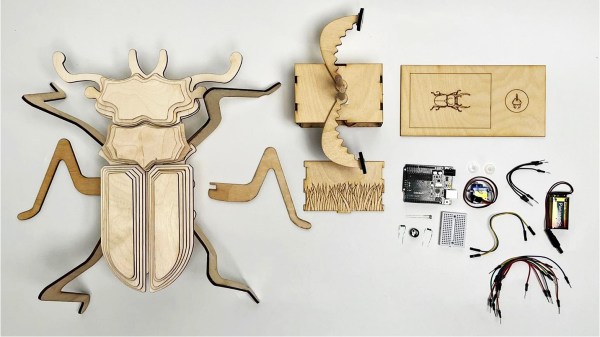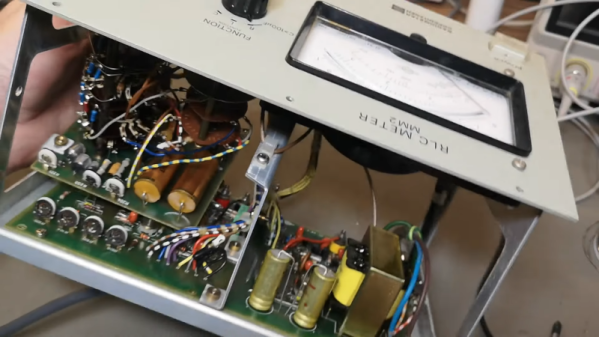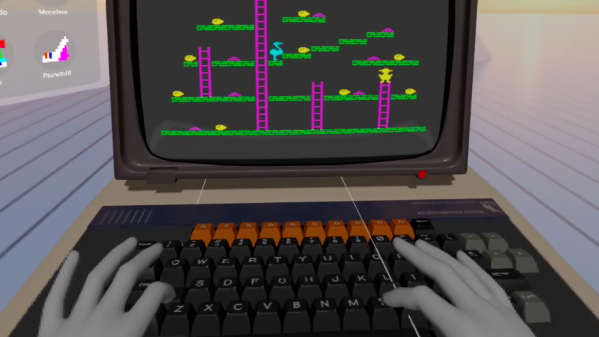No one loves a useless robot more than we do here at Hackaday. But if anyone does it might be [ARC385] with her Bug Bite Bot.
A true engineering marvel, [ARC385]’s bug bot extinguishes the candle on its own little birthday cupcake. Yup. That’s it! Even more peculiar, (and to be fair, somewhat fittingly) before her bug releases its less-than-crushing bite, it plays itself a little Happy Birthday jingle. Seems legit.
If you choose to build this little bug yourself, you’ll be happy to know that the electronics on this build are pretty straightforward. Servo motors control the pincers and a photoresistor detects the flame. [ARC385] tried using a flame sensor instead of the photoresistor, but mentioned she couldn’t get consistent performance at her required sensing distance. She also mentions that you’ll probably need to calibrate the photoresistor to ambient light if for whatever reason you choose to embark on this build yourself.
[ARC385] did a pretty good job with the laser-cut plywood to construct the bug, but using plywood adds a few more question marks to this already puzzling build. She even mentioned having to modify the pincers so they wouldn’t catch fire trying to extinguish the candle.
Would be cool if the candle could rekindle itself, but we can’t possibly support making this hack even more of a fire hazard than it already is.
Continue reading “A Buggy Entry In The Useless Robot Category”


















